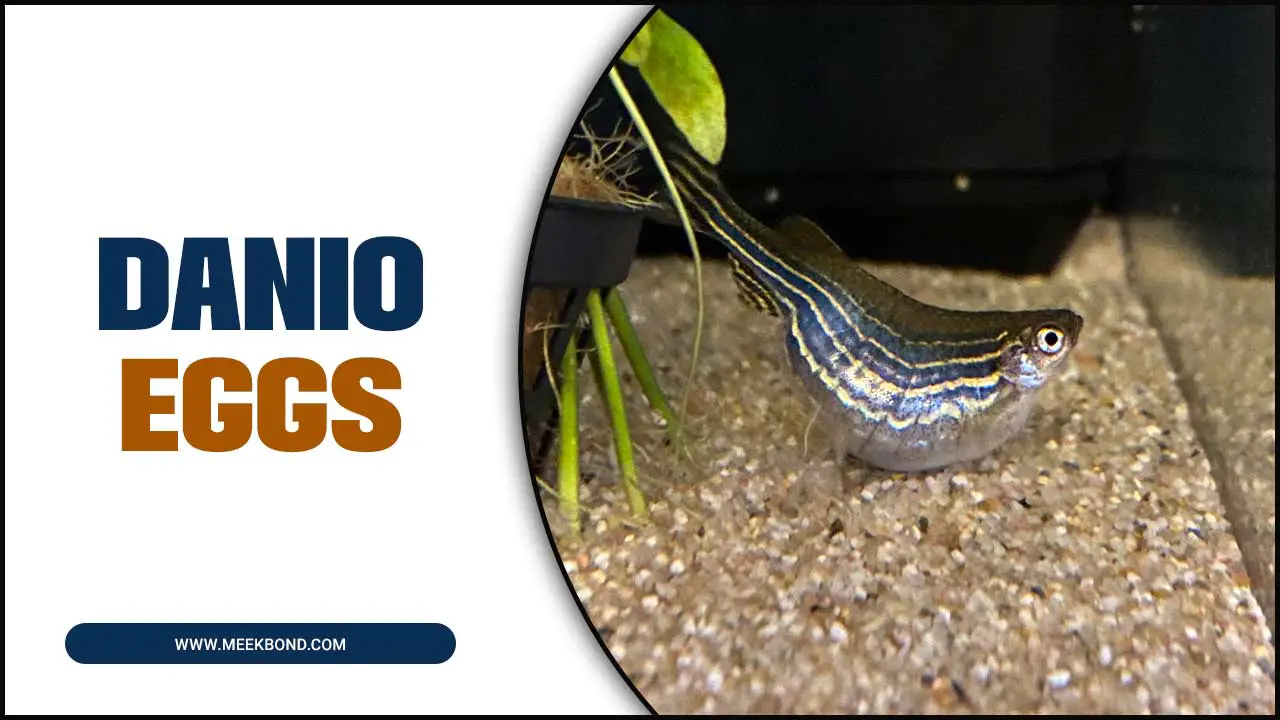Maintaining a clean and healthy environment for your fish is crucial to their well-being. One of the most common problems that fish tank owners face is high ammonia levels in the water.
Ammonia is a toxic substance that can be harmful to fish, causing stress and even death. High ammonia levels can also lead to poor water quality and harmful bacteria and algae growth. If you want to keep your fish healthy and happy, learning how to lower ammonia levels in your fish tank is important. We will explore some effective tips on how to lower ammonia in a fish tank and adjust the pH level.

What Is Ammonia?
Ammonia is a byproduct of fish digestion. It would be best if you kept ammonia spike levels below the nitrite level in an aquarium by regularly performing water changes and feeding high-quality fish food. Water conditions such as temperature and pH level can also affect Ammonia in fish tanks.
One common sign of high ammonia levels is fish gasping for air at the water’s surface. This behavior is known as “fish breathing” and indicates that the water quality needs to be improved. When high Ammonia levels accumulate, fish may become sick and damage aquarium plants.
To lower ammonia levels in a fish tank, it is important first to understand the specific needs of your fish species. There are several ways to lower ammonia levels in your fish tank. Use a water conditioner to balance water parameters and increase water quality. This will help reduce algae growth and improve water quality.
10 Effective Tips On How To Lower Ammonia In A Fish Tank
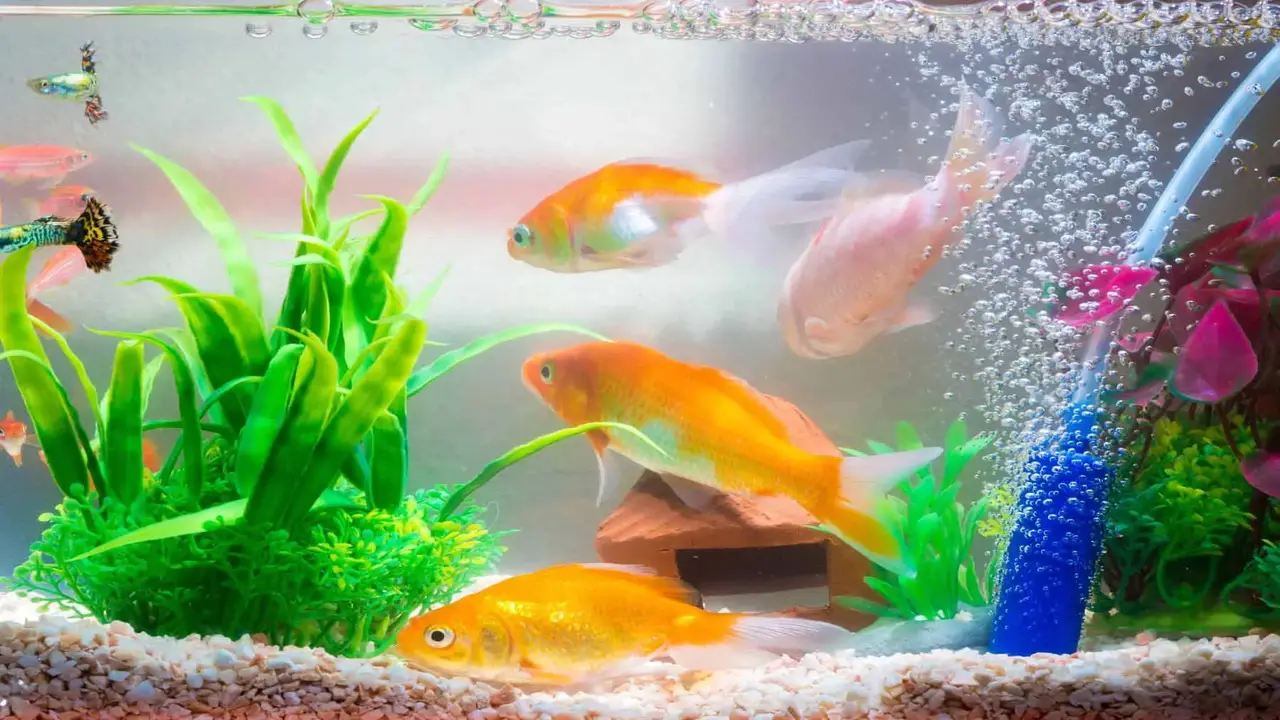
One way to lower Ammonia in a fish tank is to add a filter that removes ammonium and organic matter. A fish keeper should focus on proper tank maintenance to lower ammonia in a fish tank. Ammonia is a byproduct of organic matter and can cause fish to become sick. Here are a few simple tips on how to lower ammonia in a fish tank:
1:Add A Biological Filter
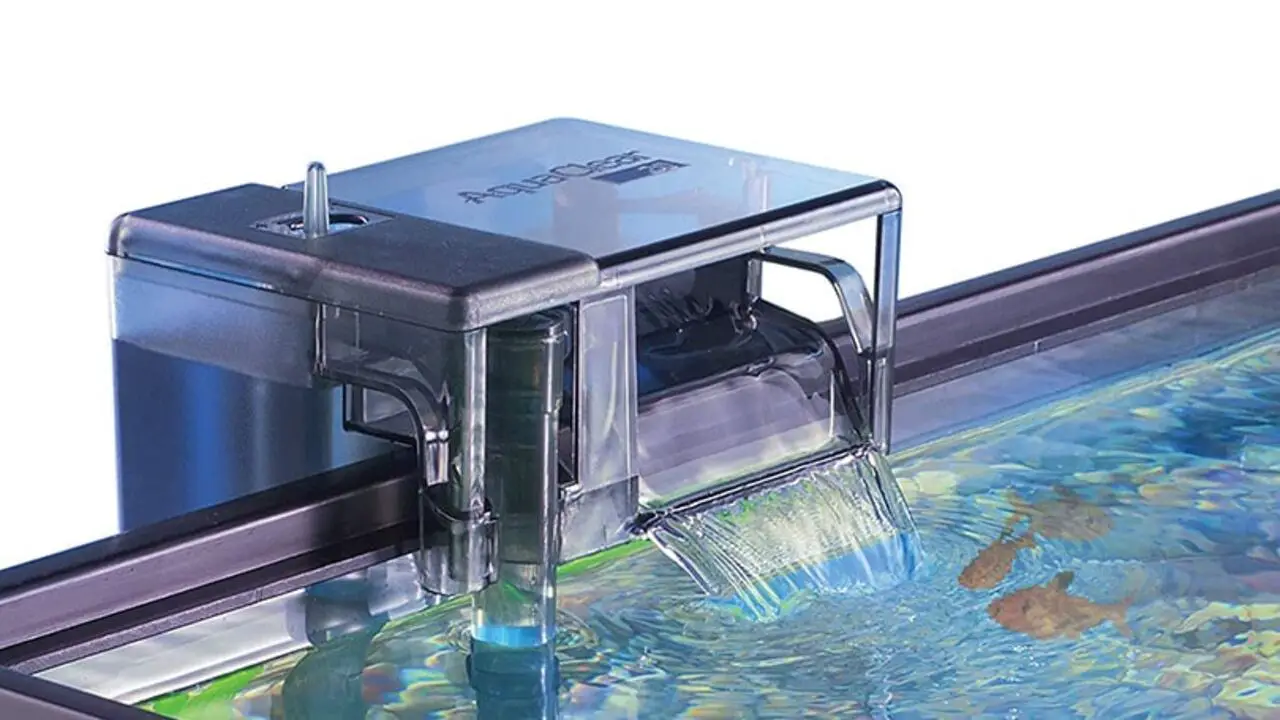
Adding a biological filter is one effective method to lower ammonia levels in a fish tank. A biological filter helps to establish a healthy balance of beneficial bacteria in the tank, which aids in the breakdown of ammonia. These bacteria convert toxic ammonia into less harmful substances like nitrites and nitrates.
You can use various options to set up a biological filter, including sponge, canister, or hang-on-back filters. Choose a filter suitable for the size of your tank and the type of fish you have.
Once you have selected a filter, follow the manufacturer’s instructions for installation. It typically involves placing the filter media containing the beneficial bacteria into the filter system. Allow the filter to run for a few weeks to allow the bacteria to colonize and establish a stable biological filter.
2:Change The Water Regularly
One effective method to lower ammonia levels in a fish tank is by changing the water regularly. This process involves removing a portion of the tank water and replacing it with clean, fresh water. Doing so can help dilute the ammonia concentration and maintain a healthier environment for your fish. Regular water changes also help remove other pollutants and waste products, promoting better water quality.
It is recommended to perform partial water changes on a weekly or bi-weekly basis, depending on the size of your tank and the number of fish. This simple yet crucial step can significantly contribute to reducing combat ammonia levels and ensuring the well-being of your aquatic companions.
3:Use A Carbon-Based Filter
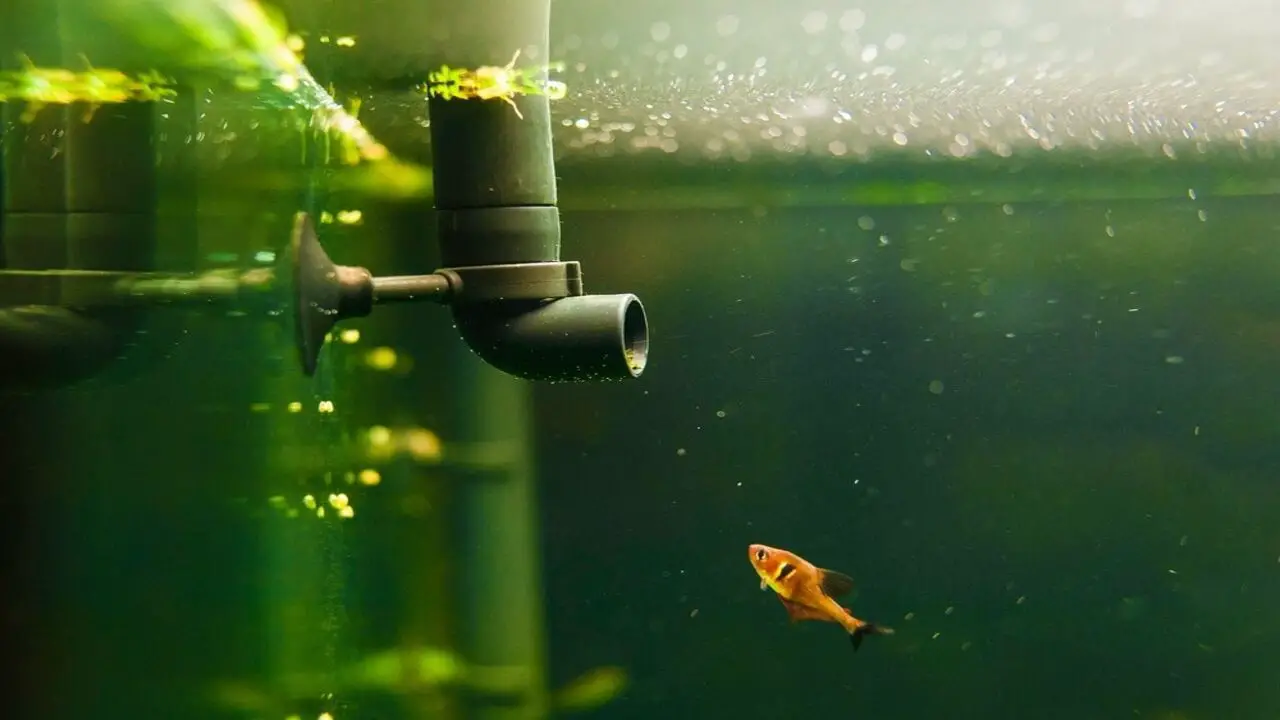
A carbon-based filter is one effective method to lower ammonia levels in a fish tank. Carbon filters effectively remove impurities and chemicals from the water, including ammonia. By incorporating a carbon filter into your fish tank setup, you can improve the overall water quality and reduce the harmful effects of ammonia on your aquatic pets.
This filter absorbs and traps ammonia molecules, preventing them from circulating into the tank. Regularly replacing the carbon filter media is essential to ensure its optimal performance in removing ammonia and maintaining a healthy environment for your fish.
4:Use An Activated Carbon Filter
An activated carbon filter is one effective method to lower ammonia levels in a fish tank. This type of filter is specifically designed to remove impurities, including ammonia, from the water.
Installing an activated carbon filter in your fish tank can greatly reduce ammonia levels, creating a healthier and safer environment for your aquatic pets. Additionally, regularly clean and replace the activated carbon to ensure optimal performance in removing ammonia and other harmful substances.
5:Use A Saltwater Aquarium System
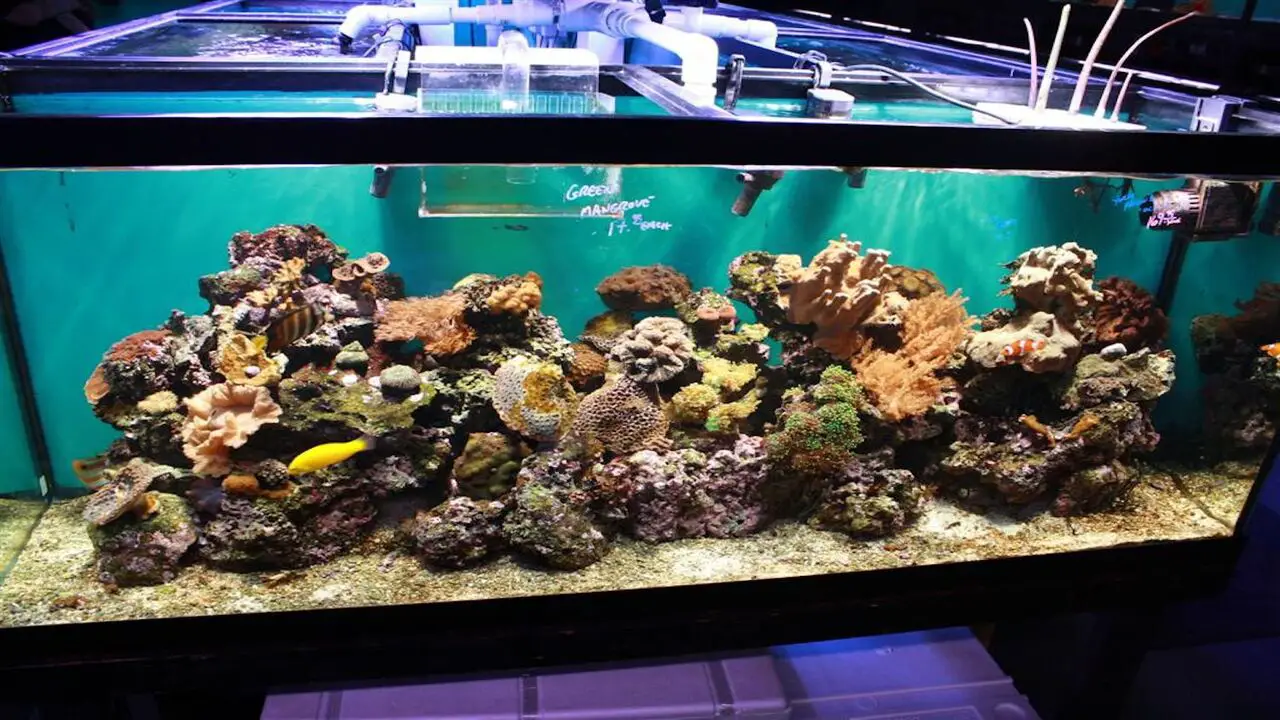
A saltwater aquarium system is one effective method to lower ammonia levels in a fish tank. This system creates a saline environment in the tank, which can help reduce ammonia buildup.
The saltwater solution acts as a natural detoxifier, assisting in the breakdown of ammonia into less harmful substances. Incorporating a saltwater aquarium system into your fish tank maintenance routine can ensure a healthier and safer environment for your aquatic pets.
6:Use A Ph Buffer
A pH buffer is one effective method to lower ammonia levels in a fish tank. To lower ammonia levels in a fish tank, you can use a chemical called zeolite, which has the chemical symbol Z. PH buffers can help maintain the tank’s stable and optimal pH level. Chemical pH adjusters can be a useful solution to lower ammonia levels in a fish tank.
A pH buffer can create a more suitable environment for your fish and reduce the risk of ammonia buildup. pH buffers work by neutralizing acidic or alkaline substances in the water, ultimately helping to maintain a healthy pH balance. It is important to carefully follow the manufacturer’s instructions when adding a pH buffer to your fish tank, as different products may have specific dosage guidelines.
Regular monitoring of the pH and ammonia levels in the tank is also recommended to ensure the pH buffer’s effectiveness and make any necessary adjustments as needed. By incorporating a pH buffer into your regular fish tank maintenance routine, you can significantly reduce ammonia levels and promote a healthier and happier aquatic environment for your fish.
7:Avoid Overfeeding
One of the key steps to effectively lower ammonia levels in a fish tank is to avoid overfeeding your fish. Overfeeding can lead to excess waste and uneaten food, ultimately contributing to the increase in ammonia levels.
It is important to feed your fish the appropriate amount of food for their size and species, considering their dietary needs. You can significantly reduce the amount of ammonia produced in the tank by practising proper feeding habits and ensuring that all food is consumed within a few minutes. This will contribute to a healthier and safer environment for your aquatic pets.
8:Clean The Gravel And Decorations
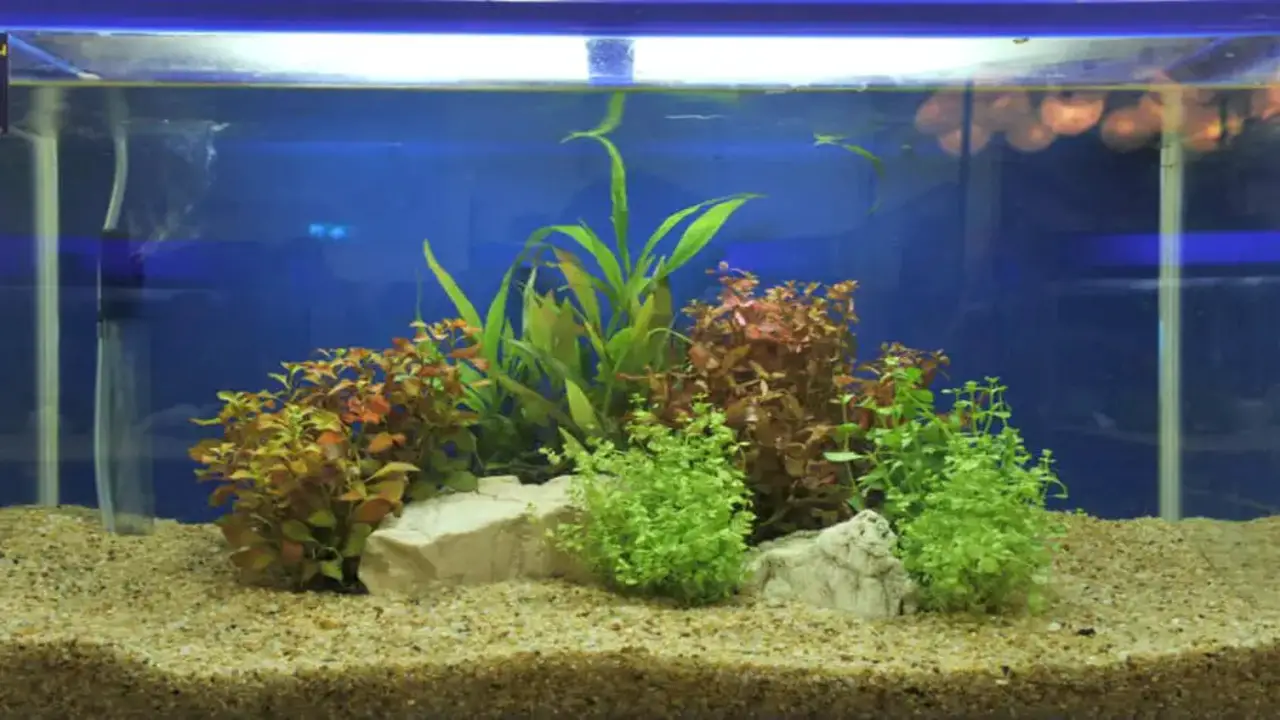
Cleaning the gravel and decorations regularly is important to lower ammonia levels in a fish tank. Accumulated waste and debris can contribute to ammonia build-up, harming the fish. Carefully remove the decorations and rinse them thoroughly with clean water to remove any excess waste.
Similarly, vacuum the gravel using a siphon or gravel vacuum to remove any uneaten food or waste that may have settled. Keeping these areas clean can help reduce ammonia levels and create a healthier environment for your fish.
9:Add Live Plants
Adding live plants is one effective way to lower ammonia levels in a fish tank. Live plants play a crucial role in maintaining a healthy aquatic environment by absorbing ammonia as a nutrient for growth. These plants can convert harmful ammonia into less toxic substances, such as nitrate, through nitrogen fixation.
However, removing any dead plant matter promptly is important, as it can contribute to ammonia build-up and negatively impact the tank’s water quality. Incorporating live plants into your aquarium enhances its aesthetic appeal and creates a natural and balanced ecosystem for your fish.
Additionally, the presence of live plants helps to increase oxygen levels and reduce stress for the fish, promoting their overall well-being. Remember to choose plant species suitable for your specific water conditions and provide them with proper care to ensure optimal growth and ammonia-absorbing capabilities.
10:Avoid Overstocking
One of the important steps in maintaining a healthy fish tank is to avoid overstocking. Overstocking refers to having too many fish about the tank’s capacity. This can lead to an increase in ammonia levels, as the waste produced by the fish exceeds the tank’s ability to handle it.
To prevent this, it is crucial to research and understand the appropriate stocking levels for your specific tank size and the fish species you plan to keep. By carefully considering the number of fish you introduce to your tank, you can help maintain a stable ammonia level and create a thriving aquatic environment for your fish.
Symptoms Of High Ammonia Levels In A Fish Tank
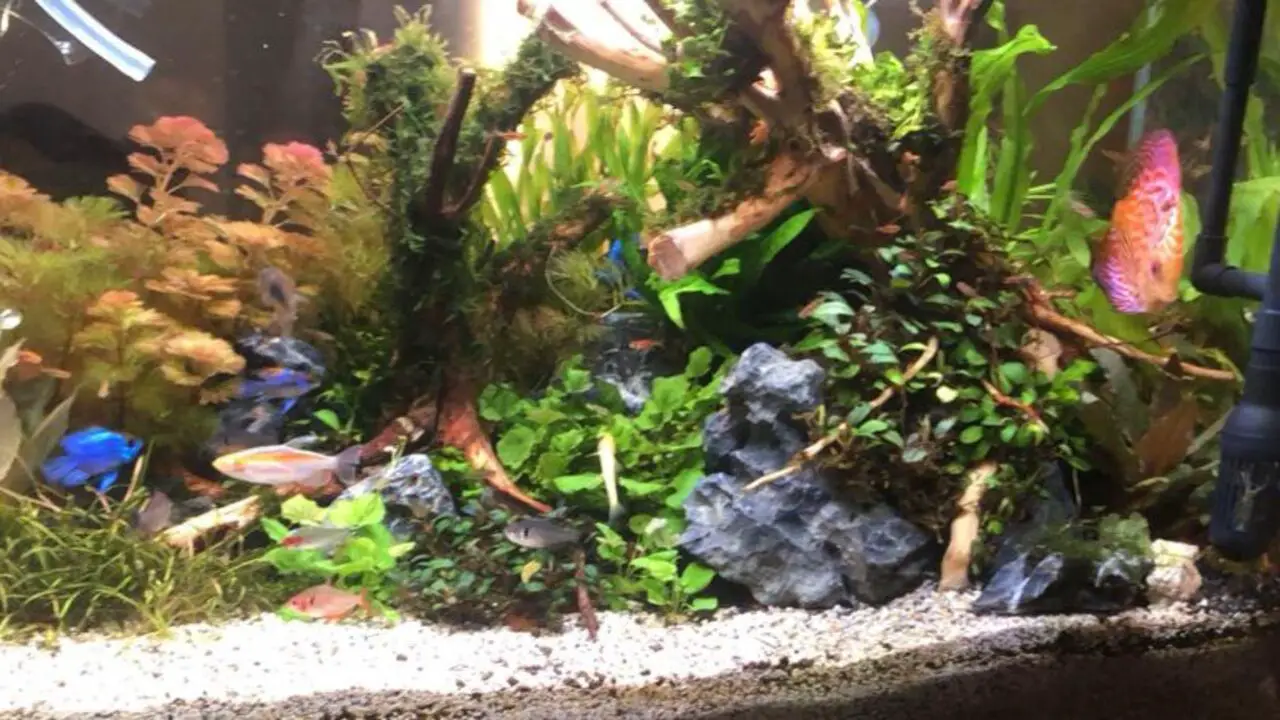
High ammonia levels in a fish tank can harm your aquatic pets’ health. It is important to be aware of the symptoms that may indicate high ammonia levels so that you can take immediate action to rectify the situation. Some common symptoms of high ammonia levels in a fish tank include:
- Fish gasping for air at the water’s surface
- Fish displaying rapid gill movement
- Fish becoming lethargic or inactive
- Fish exhibiting red or inflamed gills
- Fish developing cloudy or milky eyes
- Presence of an unpleasant odour coming from the tank
If you notice any of these symptoms, it is crucial to immediately test the water parameters and take steps to reduce ammonia levels. This can be done through regular water changes, ensuring proper filtration, and monitoring feeding habits to avoid overfeeding.
Alternative Ways To Lower It In Aquariums
Ammonia can be a major concern in fish tanks, as it is toxic to aquatic life. There are alternative ways to lower ammonia levels in aquariums. Firstly, Regular water testing is essential for maintaining a healthy fish tank.
Secondly, One effective approach is to use a water test kit to monitor the ammonia levels in the aquarium regularly. One approach is establishing a biological filtration system that includes beneficial bacteria to process ammonia. Monitoring ammonia levels regularly is crucial to maintain a healthy environment for your fish.
- Water Changes
- Increased Biological Filtration
- Add Beneficial Rock (AKA Live or Dry Rock)
- Upgrading Your Filtration System
- Bacteria Supplements
What To Do If Your Fish Tank Has High Ammonia Levels?
High ammonia levels in a fish tank can be extremely harmful to the health of your fish. If you notice that your ammonia levels are high, there are a few steps you can take to rectify the situation. First and foremost, it is important to do a partial water change immediately. This will dilute the Ammonia and reduce its ammonia concentrations in the tank. You should also ensure your filter works properly and is adequately sized for your tank.
Add one tablespoon of baking soda to every 10 gallons of water to test the ammonia level in the tank. Wait 24 hours, and then test the story again. If the ammonia level remains high, repeat steps 2 and 3 until the level is below ten ppm. When ammonia levels are lowered, monitor them regularly and make any necessary adjustments.
Things You Should Not Do While Lowering Ammonia Levels In A Fish Tank
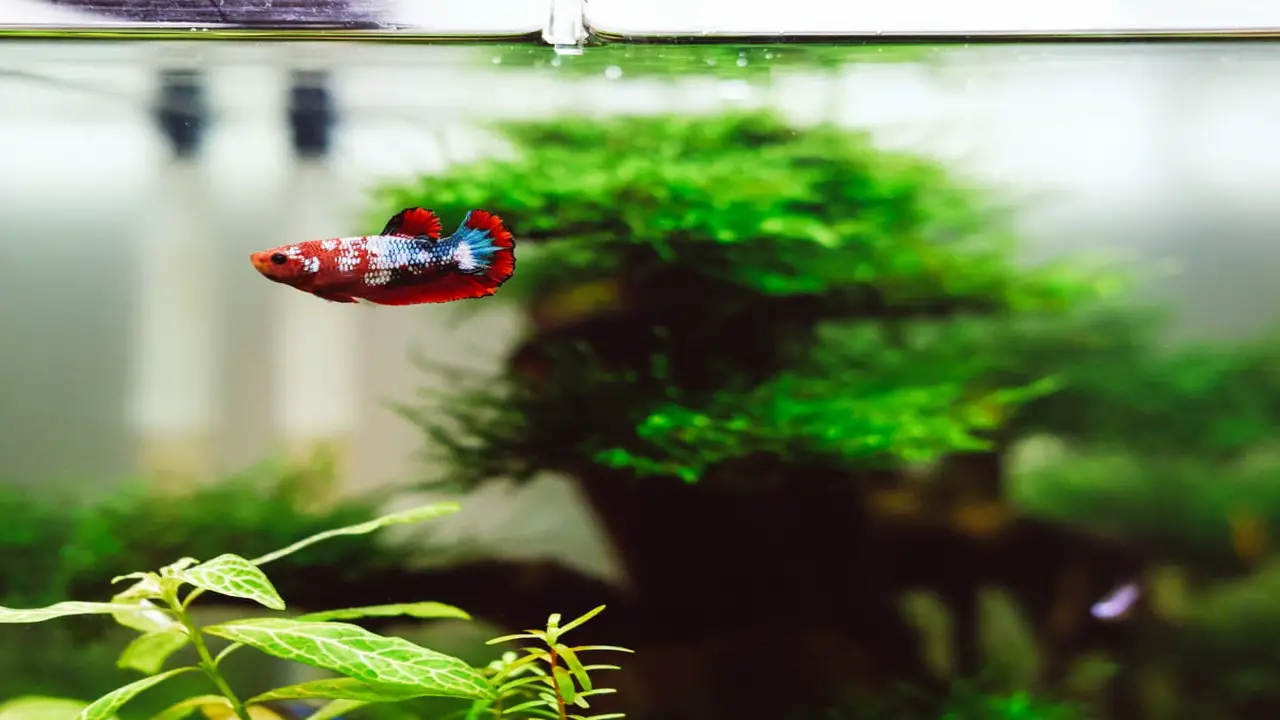
Regarding lowering ammonia levels in a fish tank, there are some things you should avoid doing. First and foremost, do not overfeed your fish. Overfeeding can lead to an excess buildup of waste in the tank, which can cause ammonia levels to rise. Additionally, do not overcrowd your tank with too many fish. This can also lead to excessive waste buildup and make it harder for your filtration system to meet the demand.
Another thing to avoid is changing too much water at once. While it may be tempting to do a large water change to reduce ammonia levels quickly, this can harm your fish by causing a sudden shift in pH levels. Instead, opt for smaller, more frequent water changes.
Finally, do not rely solely on chemical treatments to lower ammonia levels. While these products can be effective, they should only supplement proper aquarium maintenance practices, such as regular water changes and filter media cleaning. Avoiding these common mistakes can help your fish stay healthy and happy in their environment.
Causes Of High Levels Of Ammonia In Fish Tanks
High ammonia levels in fish tanks can seriously concern aquarium owners. Ammonia is a toxic compound produced by fish waste, decaying organic matter, and uneaten food in the tank. When ammonia levels rise, it can have detrimental effects on the health and well-being of the fish.
Understanding the causes of high ammonia levels is essential in preventing and managing this issue. High Ammonia levels in fish tanks can result from various factors, including water quality issues, fish health issues, fish interactions, and misuse of additives.
1.New Aquarium
When setting up a new aquarium, it’s important to understand the causes of high ammonia levels and how to lower them effectively. Ammonia build-up can be caused by overfeeding, inadequate filtration, or an insufficient cycling process.
To prevent this, ensure proper feeding, use a reliable filtration system, and allow the tank to cycle before adding fish. Regular water testing and partial water changes will also help maintain a healthy ammonia balance in your fish tank.
2.New Livestock Additions
Regarding lowering ammonia levels in a fish tank, it is important to understand the causes of high ammonia levels. One common cause is the addition of new livestock. Introducing new fish or other aquatic animals can increase ammonia production, as the tank’s biological filtration may not cope with the sudden influx of waste.
Monitoring ammonia levels and implementing proper quarantine and acclimation procedures can help prevent spikes in ammonia and ensure a healthy environment for your fish.
3.Dead Organic Matter
To lower ammonia in a fish tank, it is crucial to understand the causes of high ammonia levels. One common cause is the accumulation of dead organic matter in the tank, such as uneaten food or decaying plants. Regularly cleaning the tank, removing any excess debris, and maintaining proper filtration can help prevent ammonia buildup and ensure a healthy environment for your fish.
4.Overfeeding
Overfeeding is one of the main causes of high ammonia levels in fish tanks. When fish are given more food than they can consume, the excess uneaten food decomposes, producing ammonia as a byproduct. This can be detrimental to the health of the fish and the overall water quality.
To lower ammonia levels, feeding fish in moderate amounts is crucial, ensuring that they finish their food within a few minutes. Regular water changes and proper filtration also play a significant role in maintaining a healthy aquarium environment.
5.Overstocking
Overstocking is one of the main causes of high ammonia levels in fish tanks. When too many fish are in a tank, their waste production surpasses the tank’s capacity to maintain a healthy balance.
This excess waste leads to an accumulation of ammonia, which can be harmful to fish. To lower ammonia levels, it is crucial to reduce the number of fish in the tank to a manageable level and ensure proper filtration and regular water changes.
Benefits Of Lowering Ammonia In A Fish Tank
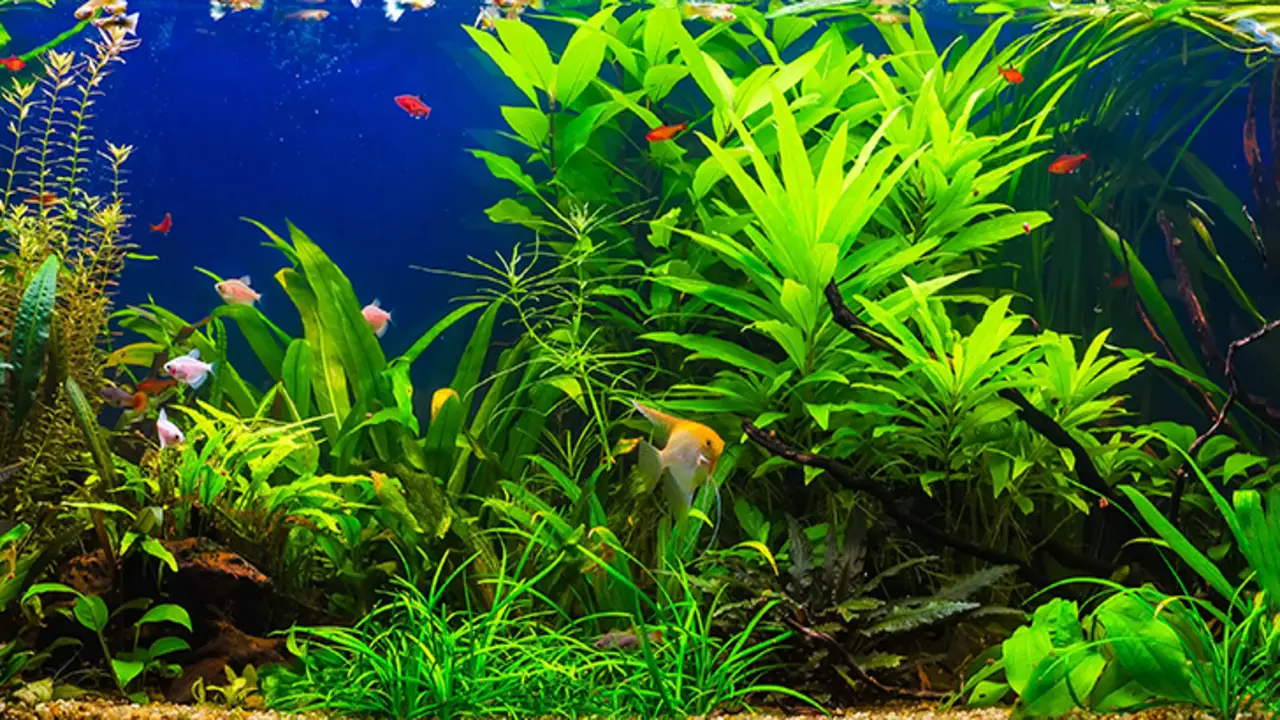
Lowering ammonia levels in a fish tank can have several benefits for the health and well-being of your aquatic pets. Here are some key benefits of maintaining low ammonia levels:
- Improved water quality
- Reduced risk of ammonia burns
- Enhanced fish immune system
- Increased oxygen availability
- Healthier aquatic plants
Possible Side Effects Of Lowering Ammonia Levels In A Fish Tank
Lowering ammonia levels in a fish tank is essential for maintaining a healthy environment for your aquatic pets. However, it is crucial to be aware of the possible side effects when ammonia levels are reduced too quickly or drastically.
One potential side effect is a significant drop in pH levels, which can cause stress and even death for some fish species. Another possible side effect is increased nitrite levels, which can harm fish. To minimize these risks, it is recommended to gradually lower ammonia levels over time and monitor water parameters closely.
It is also important to ensure that your filtration system is functioning properly and that you are not overfeeding your fish, as excess food can contribute to ammonia buildup in the tank. By taking these precautions, you can safely maintain a healthy aquatic environment for your fish.
Conclusion
Ammonia is a byproduct of fish waste and uneaten food. When ammonia levels in a fish tank get high, fish waste starts to decompose, which causes fish waste to change into Ammonia. This process is called nitrogen cycling. Side effects of high Ammonia include decreased water quality and stress for fish.
To lower ammonia levels in your aquarium, change water parameters such as water hardness and water temperature regularly, keep your filter running smoothly, change gravel frequently, feed your well-balanced fish food, and remove uneaten food from the tank.
Also, ensure that there are no dead plants or uneaten food in the tank that can decay to produce Ammonia. We have provided tips on lowering ammonia levels in a fish tank so that you can enjoy your fish without worry. Following these tips ensures you know how to lower ammonia in a fish tank and keep it from harmful ammonia levels.
Frequently Asked Questions
How Do I Lower Ammonia In My Fish Tank Naturally?
You can take several steps to naturally lower ammonia levels in a fish tank. First, ensure proper filtration and regularly clean the tank to remove excess waste and uneaten food. Adding live plants can help absorb ammonia and provide oxygen for the fish. Performing regular water changes will dilute the ammonia concentration.
What Chemical Removes Ammonia From Fish Tanks?
Activated carbon is a commonly used chemical that can remove ammonia from fish tanks. It adsorbs the ammonia molecules and traps them within its porous structure. Regularly replacing the activated carbon is important to ensure its continued effectiveness in removing ammonia.
What Detoxifies Ammonia In An Aquarium?
In an aquarium, the detoxifying ammonia is primarily performed by beneficial nitrifying bacteria. These bacteria convert ammonia, which is toxic to fish and other aquatic organisms, into less harmful substances such as nitrite and nitrate.
What Absorbs Ammonia In An Aquarium?
Activated carbon, zeolite, and biological filter media such as bio balls or ceramic rings can absorb ammonia in an aquarium. These substances help to remove excess ammonia from the water, which is important for maintaining a healthy and balanced aquatic environment for fish and other aquatic organisms.
Can Salt Reduce Ammonia In Water?
Yes, salt can help reduce ammonia in water. When added to water, salt increases the electrolyte concentration, enhancing the ion exchange. This allows ammonia ions (NH4+) to be replaced with sodium ions (Na+), reducing ammonia levels.

Aquarium passion is all about connecting with the aquatic life and providing education to the public on the importance of these creatures. We showcase a wide variety of marine life through our exhibits as well as working with schools to provide unique learning opportunities for students of all ages.

